The Scenic Spots in Qingdao
Located at the southern tip of Shandong Peninsula, Qingdao is a unique coastal city,with pleasant climate and beautiful scenery of the mountain and the sea. Qingdao is also an important coastal city in the eastern part of China, one of the important economic center cities and port cities in China, and the nation-famous historical and cultural city and scenic tourist resort. Here are some famous attractions in Qingdao:
Laoshan Scenic Area


Laoshan Scenic Area is located in the eastern part of Qingdao. There are four routes to visit Laoshan Scenic Area with three routes (south route, east route and middle route) being land roads, and one waterway. The main attractions include Beijiushui, Shangqing Palace, Taiqing Palace, Longtan Waterfall, Taiping Palace, Mingxia Cave, Beizhai Agricultural Eco-Tourism Area, Jufeng Scenic Area, etc. Laoshan is the famous Taoist mountain for its majestic, spectacular, strange and beautiful scenes. Laoshan Scenic Area is flanked to the east and south by the Yellow Sea, reputed for "No.1 Sea Mountain".
Jufeng (the highest peak) is the top of Laoshan with the scenery of the sunrise being beautiful and charming.
Since ancient times, Laoshan was regarded as the dwellings of immortals. Taiqing Temple was where the Taoist priest lived. It was the place where Pu Songling wrote Laoshan Taoist Priest when he saw the beautiful and magnificent scenery of Jufeng. Huayan Temple is the only remaining temple in Laoshan. Buses are accessible to different scenic spots, but they are chargeable.
Zhanqiao Pier and Qingdao Railway Station
Zhanqiao Pier is one of the symbols of Qingdao, which is located off the south seashore of Qingdao and to the north of the Qingdao Bay, facing Xiao Qingdao, and is in a straight line with Zhongshan Road. Zhanqiao Pier has a reputation of "Changhong much cited" and is an important symbol of Qingdao. In the south is Qingdao railway station with traffic being busy, especially in the rush hour.
Zhanqiao Pier was built during the reign of Emperor Guangxu of the Qing Dynasty. It is the earliest military pier in Qingdao with a history of 100 years. At the southern end of the pier, there is a semicircular water-break building and here is a traditional, two-storey, octagonal pavilion, named “Hui Lan Ge”.

The pavilion is covered with colored glazed tiles, and there are 24 red lacquered pillars around to support the building. There is a spiral staircase in the middle of the building to go upstairs and surrounded by large glass windows. Beautiful landscape can be seen from each window. All the pictures are of the beautiful Qingdao Bay and attraction, and famous buildings.There are some displays in the Huilange Pavilion with various kinds of sea products and ornaments being sold most of time.
Qingdao Railway Station is not far from here, only ten-minute walk. The appearance of Qingdao Railway Station remains what it was years ago, but the facilities inside are kept with the development of the times. There is high-speed rail in the station, which is environmental-friendly.
Badaguan (Eight Great Passes)
The name “Badaguan” refers to eight roads named after eight famous passes in China, which are used as the name of these roads. Lying between Huiquan Cape and Taiping Cape, Badaguan is a famous tourism resort of our country.
Badaguan features the architectural styles of more than twenty countries and regions, an area as a “world architectural exhibition.” Visitors can admire Russian, English, French, German, American, Japanese and Danish buildings, such as Huashi Tower and the Princess House.

To the south is No. 2 Bathing Beach, which is a best swimming place in summer, famous for soft sand, clean water and calm waves. The beach and Badaguan have formed the typical scenery of "red green trees and blue sky" in Qingdao.

Qingdao Huashi Tower
Located at No. 18 Huanghai Road, the Huashi Tower was built in 1930, by a Belarusian nobled man who was exiled in China. It is a European castle-style architecture, integrating a variety of Western architectural styles, characteristic of Greek, Roman and Gothic once. The main building is constituted by a circle and a polygonal stone tower, with marble and granite stuck inside and outside, named as the Huashi Tower.
Qingdao Haichang Polar Ocean World
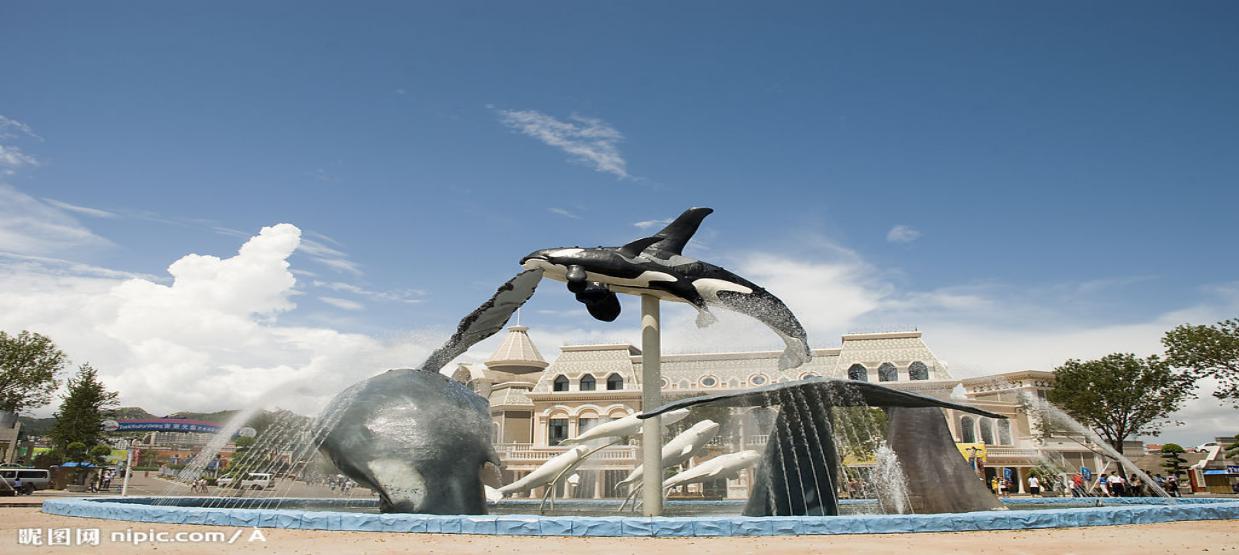
Here you can watch the show of the white whale and the dolphin; lucky viewers can touch dolphins on the forehead. In addition to pavilions for polar bears, walruses, sea lions, penguins, sharks, there are a number of interactive and recreational facilities for children.
Located at the southern end of the Shilaoren National Tourist Resort, Polar Ocean World is surrounded by sea on three sides at the base of a mountain. It is a popular tourist attraction and it was built on the base of the Qingdao Dolphin Show Center. The center incorporates restaurants, accommodation, travel, shopping and entertainment together with the Ocean Park.
You can take the elevator to the second floor. On the first floor there are some polar animals such as polar bear, sea lions and sea otters. The second floor is like a world of ice and snow. Some polar scenes such as the cave of snow and ice, Eskimo's snow house can be seen everywhere in this simulated polar environment. You can have an almost real experience of polar life. There are penguins, Antarctic expedition model and the pirate ship, etc. You could take a photo here, as if you are really at the South Pole.
During tour you can take some water and food, also you can have your meal in the post restaurant on the second floor of the penguins kingdom, and the price is reasonable. In addition, there is a gift shop at the exit with all kinds of postcards and dolls, which are very suitable for children as a gift.
Qingdao Beer Museum

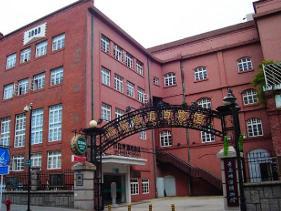
Qingdao Beer Museum is located in the Tsingtao Beer Brewery at No. 56 Dengzhou Road. Built in 1903, it combines historical treasures with modern design. The old German building and equipment are an important part of company culture. The museum describes the history of the Tsingtao Beer Brewery, its profound culture and advanced technology, and integrates beer entertainment and shopping. It is the first and only beer museum in China, and the first of its kind in the world. It has three main areas: the history of a century and culture area, production technology area, and multi-functional area. It takes one hour to tour the museum. In 2004, the museum was listed as the first industrial tourism demonstration unit. In 2005, it was designated as a national AAAA tourist spot. In 2006, it was listed as a national key cultural site under national protection. In 2007, it became one of the first famous tourist sites in Qingdao.
Situated at No.56, Dengzhou Road, the Museum is built on the site of German Beer Company Qingdao Branch. Being the first museum of its kind in China, the construction of the museum provides a spectacular showcase for the local beer to overseas visitors, and has become the pride of the local people.
Fangte Magic Kingdom
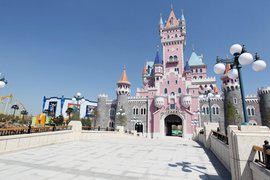
Fangte Magic Kingdom is the fourth generation theme park, which resembles the mainstream the international theme park.There are more than 10 project areas such as Light of Life, Terra Cotta Warriors of the Qin Dynasty, the Monkey King, Mountain Tanggula and so on. There are more than 200 items including the theme project, the entertainment project, the recreation project and the landscape project. These items are about modern science and technology, the future of science, science fiction, and myths and legends. The perfect fusion between international fashion entertainment elements like cartoons and film tricks and the symbols of Chinese traditional culture is made by the creative use of high-tech means. Here are some tourist projects: Over the Limit, Light of Life, Laoshan Taoist, Bolide, Magic Castle, Terra Cotta Warriors, Tanggula Mountain, Water World, Speed Windmills and so on.
Qingdao Fangte project will cover three major theme parks including Qingdao Fangte Magic Kingdom and Qingdao Fangte Film Park in construction and Qingdao Cultural Industry Theme Park. The project will satisfy the tourists of different cultural backgrounds, different ages and different interests from Qingdao, Shandong and even the entire north China region to create a place for magical fantasy adventure and self-challenge.
Jimo Hot Spring
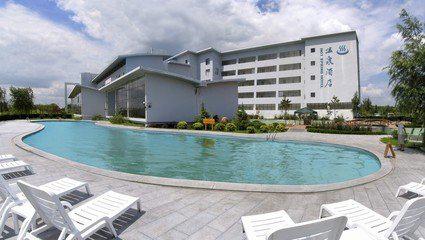
Tiantai Hot Spring Resort is located in Jomi Hot Spring Town with a 27-hole international standard golf course. It is a large and high-level village resort integrated with delicious food, business activities, golf training, hot spring bath, bathing beach, skiing (in winter), astronomical observation and other leisure entertainments. You can go there driving along Binhai Avenue, only 30 minutes 30-minute drive from Qingdao.
Qingdao Tiantai Hot Spring Resort is an ideal place for relaxing. People can taste various kinds of food from all over the world, and there are fresh local crabs, clams, peaches, and dishes. The resort offers Chinese, Western and Korean cuisines, and multi-purpose halls. After enjoying a feast, you can try the pure water hot spring SPA.The unique sea water hot spring bath contains 38 kinds of mineral substances and trace elements.
Qingdao Tiantai Hot Spring Golf Club provides golf, villas, hot spring baths, skiing, dining, business and leisure activities. The golf course is a standard international course with 27 holes. In addition, equipped with the large-scale golf practice area, the summit club house is an ideal place for relaxing. The design of the course is mixed with the surroundings such as hills, gullies and lakes, looking natural and great.
9.Firewood Yard
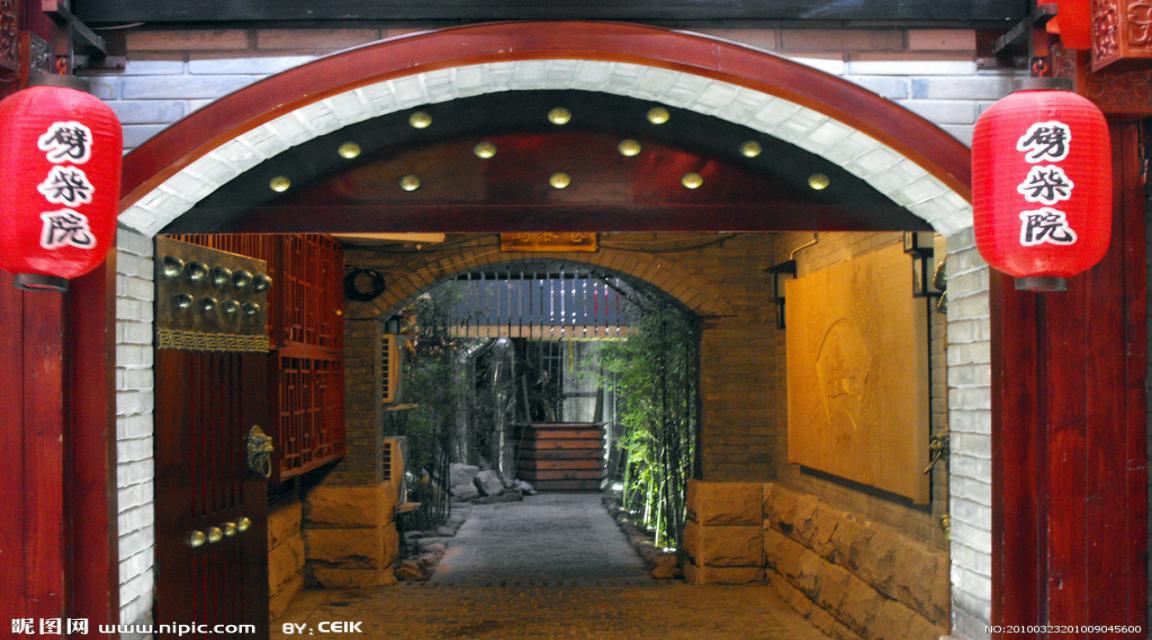
It is the earliest snack street of Qingdao where various kinds of snacks such as strong-smelling preserved bean curd, Qingdao traditional yogurt, grilled squid are sold. You can go to Jiangning Restaurant to enjoy the characteristic food, watch the
traditional performance and feel the charm of the ancient amusements of this yard.
Firewood Yard lies on Zhongshan road, a business street. It is a famous street of snacks in Qingdao, on which several humble houses called "firewood houses” existed before the invasion of Germany in 1902. Later, the Germany invaders built Jiangning Road and some big yards where they could dine and relax, then the yards developed into the earliest amusement center and food streets. The streets in Firewood Yard form the figure of Chinese character 'Ren'. The main street is under 100 metres long with old houses lying on both sides which contrasted to the surrounded high buildings.Going into the yard from the entrance on Zhongshan Road, you can see the beautiful doorbuilding on which the name "Firewood Yard” was written. Going through the narrow porch, here you arrive at the main street which is full of various restaurants. People can taste seafood or barbecue which are a little expensive, but people are willing to pour here to feel the passionate atmosphere, enjoying the food and shopping.
10.Old Stone Man Beach
Old Stone Man Beach is one of the most beaches in Qingdao, and it is a comprehensive resort beach, integrating vacation, sightseeing tour, marine sports, beach sports and leisure and entertainment. It has four high-quality activity areas, including resort beach, celebration beach, sports beach and senior member beach.
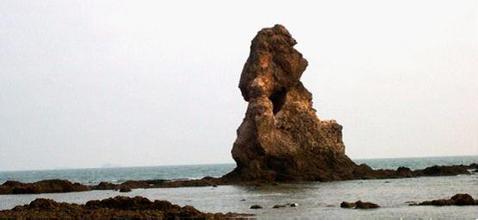
Located at the farthest east of Old Stone Man National Tour Resort and the southwest of Old Stone Man village, there stands a 17-meters-high stone which is about a hundred meter away from the coast. It is called “Old Stone Man” with its shape looking like an old man sitting in the blue ocean. There is a beautiful fairy tale about the stone, which attracts lots of tourists from both home and abroad. The stone now is a very significant symbol of the tour resort, and it is also a famous scenic spot in Qingdao.
11.May Fourth Square
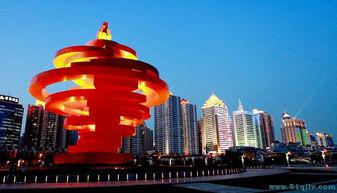
May Fourth Square is named in honor of the May 4th Movement which took place in 1919, and it is the core of the Sculpture Street on Donghai Road. The large-side steel structure sculpture “the Wind of May” spiral upwards, which looks like a light breeze, fully embodies patriotism and Chinese national cohesion of anti-imperialism and anti-feudalism in the May 4th Movement. This is a symbol square of Qingdao for assembly, recreation, entertainment, tours, sightseeing, etc.
To the west of the square is the romantic Music Square, and to the east the Olympic Sailing Center. People can appreciate different sceneries along the seaside. Compared with the Huiquan Bay and Zhanqiao Pier, here takes on a more fashionable and modern look. Leaning on the railing of the seashore and looking around the modern scenery, you will feel the unique heroic and warmth of Qingdao.
Qingdao Olympic Sailing Center is not far away from here. The distance seems very short, which is a ten-minute drive.
12. Xiaoqingdao Isle
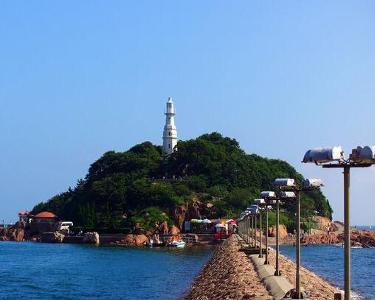
Xiaoqingdao Isle covers an area about 24,000 square metres, 17 meters above sea level. Its shape looks like an ancient violin, so it is also called “Violin Isle”. This isle is about 370 meters away from the eastern shore and is connected with the land by a long coastal levee. When night falls, the red lights of the lighthouse on the isle drift on the sea with the ones of Zhanqiao Pier, forming a wonderful picture, which is called “floating light of the isle” and becomes one of the most famous scenery in Qingdao.
13.Golden Beach

Qingdao Golden Beach, close to the Yellow Sea, stretching east and west, 3500 meters long and 300 meters wide, is one of the largest and most beautiful beaches in China with the finest sand. It is spoken highly as “Asia's First Beach”. All kinds of services can be provided such as sightseeing, bathing, dining and shopping. Also visitors can enjoy many colorful recreational activities, such as beach volleyball, beach football, surfing, sailboats, speedboats, diving, bumper cars and so on.
14.Qingdao Underwater World
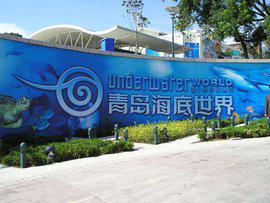
Qingdao Underwater World borders Luxun Park and No. 1 Beach, covering an area of 20,000 square meters and a total water volume of 6,000 tons. It is a large marine ecological tourist project jointly developed by Qingdao Aquarium and the Shandong Luxin Investment Group with a total investment of one billion RMB yuan. Walking through the tunnel, visitors feel as if they are at the bottom of the sea. You can see fish of different sizes and species swimming around you and sharks playing with divers. The unique geographic location and modern exhibits integrate resources such as Qingdao Aquarium, Marine Organism Sample Hall and Freshwater Aquarium. These features and the natural beauty in the surrounding environment make the Underwater World one of the most distinctive marine ecological parks in China. It is the first underwater project in Shandong Province, and it is a unique scenic spot on the golden coast of Qingdao.
In the Underwater World, people can see the Japanese giant pincers crab, the king of the ocean sharks, the cute nautilus, the seahorse papas which are responsible for the birth of their babies, and ten rare Clionelimacina, whose figures look like the angels. So they are also called ‘Angels’. However, their life span is very short, ranging from six to ten months. They are so rare that they can only be seen in Qingdao Underwater World currently.
Apart from various creatures in the sea, there are wonderful performances in the Underwater World such as the breathtaking show between humans and sharks, the magnificent show of the mermaid and the splendid acrobatics performance under water. All of them will impress you much and leave you an unforgettable memory.
15.World Taxidermy Gallery of Qingdao Binhai University
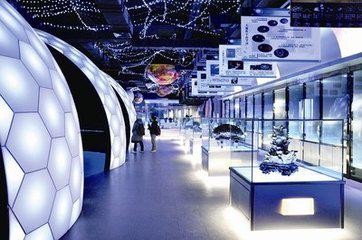
The gallery is located on the campus of Qingdao Binhai University. It is a national AAAA scenic spot opening to the outside, and it is also a three-star level popular science education base in Shandong province. There are various specimens designed to live in their living surroundings making visitors feel on the scene. In addition, there are a universe museum and fine arts gallery where visitors can know much about the universe and appreciate the world famous paintings. Also, this gallery is the practice base for the majors in tourism of our university.
All the students can visit the museum for free with their own school badges after 16:00 from Tuesday to Friday every week.
The scenic spots around Qingdao
1.Tai’an City---Mount Tai
It is on the road from Dai Temple to Heavenly Southern Gate that the ancient emperors walked for many times in history. 7000 stone stairs which runs 9 kilometers long through the mountain from the foot to the zenith looks like the axes of Mount Tai integrating earth, heaven and human as a whole and thus is a road for human beings to heaven. Because of the unique integration of human civilization and natural landscape, Mount Tai is respected by billions of Chinese people and becomes famous all over the world as well as treasurable heritage of panhuman.
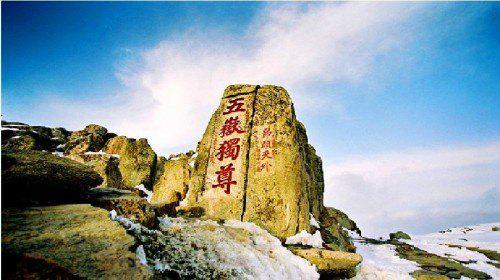
After entering Heavenly Southern Gate is a temple called 'Weiliao Temple', and on each side of it is an exit to going northward. Turning east after leaving Heavenly Southern Gate is Heaven Street, and the farthest east of which is Ancestral Hall. After entering the Sunset Ancestral Hall, you can see its main hall and side halls and other special buildings such as Bell Tower, Drum Tower, Incense Pavilion, Longevity tower. The superb building skill of Sunset Ancestral Hall is regarded as the model of ancient architecture built in high mountains.
2.Jinan city--Baotu Spring
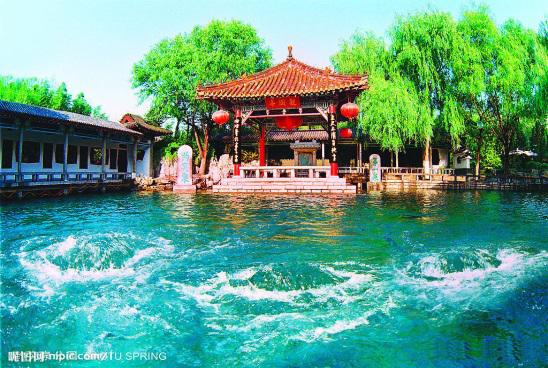
Baotu Spring Park lies in the center of Jinan city. It is to the north of QianfoMountain, west to the Springcity Square, south to Daming Lake, with an area of about 158 mu. The park is a national park famous for its springs, especially for BaotuSpring, which is the top of 72 springs in Jinan city, so it gained the fame of “the First Spring”.
The Baotu Spring is a culturally significant artesian karst spring located in the city of Jinan, Shandong. It was declared the "Number One Spring under the Heaven". The Baotu Spring is the most renowned among the more than 70 named artesian springs in the downtown area of the city of Jinan. The water of all these springs originates from an Ordovician karst aquifer under the city. The spring water feeds into a rectangular spring pool that extends 30 meters from east to west and 18 meters from north to south.
The Underground Grand Canyon---Yishui, Linyi

The total length of the Grand Canyon is 6,100 meters, of which 3,100 meters has been exploited as a tourist line. The Grand Canyon was shaped by the enormous karst crack 200,000 years ago. The murmuring stream makes beautiful sound. The grotesque stalactites, stalagmites and stone waterfall portray a variety of styles. Over one hundred scenic spot such as One River, Five Passes, Six Waterfalls, Nine Spring, Nine Palaces, and Twelve Gorges etc. are magnificent and remarkable, deep and serene. The Grand Canyon has the cliff with the height of several meters, the colorful vault of heaven, the bottomless crack of stone, the waterfalls just like the Milky Way pouring from the sky and the spiral shells with different styles. The wide place of the Grand Canyon accommodate over one hundred people, the narrow place only holds one person. The caves containing small ones, the gorges in the gorges, various stalagmites, stone pillars, fungus-shaped stones decorating the Grand Canyon, amaze visitors very much. The long and continuous flowing underground river makes the Grand Canyon a rare cavern in the north of China. The cave experts took advantage of the underground river and created the drift in the cave. At present, five hundred meters sections of the river can travel by yacht. After the second stage project is finished, the length for drift can reach 2,500 meters. The visitors take the yacht, go downstream, and experience the exciting feeling of fright, danger, and astonishment and the marvelous scenery of the Grand Canyon.
You can enjoy the beauty of the Underground Grand Canyon.
4. Kong Family Mansion,Confucius Temple, Cemetery of Confucius---Qufu
Qufu is home to China’s great ideologist and educator, Confucius, who was the founder of Confucian School in ancient times. Reputed as Jerusalem in the east and one of the world’s four holy cities, Qufu has an abundance of brilliant culture heritages, including over 600 cultural relics and historic sites, 184 key culture relic protection sites and 6 national key culture relic protection sites, such as the city ruins of the Kingdom of Lu in the Western Zhou Dynasty and the tomb of Shao Hao who was one of ancient China’s Five Emperors.
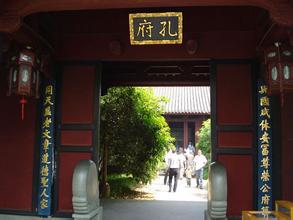
Confucius’ Residence, also called "Mr. Yansheng’s Residence", was the living place for Confucius’ most closely descendents. After Confucius’ death, in order to consecrate him, his offspring mainly lived in the native place in Queli. Emperors in previous dynasties granted additional titles and territories to his descendents over and over again and also vouchsafed land for building mansions.Now Confucius’ Residence covers a total area of 40 acres, with 463 halls and buildings in all which are also divided into three routes: in the east, Dongxue has Yiguan Hall, Mu’en Hall, family Kong’s temple, etc; Xixue has Hong’er Room, Zhongshu Hall, Anhuai Hall and Flower Hall in the west; the middle one is where the main construction of Confucius Mansion located and is divided into two parts. The one in the front is government office and the one behind is inner chamber. The garden is in the end. The inner chamber includes: Qiantang Building, Houtang Building, etc. It is where the family of Yansheng Gong lived and till now the luxury furnishings and daily necessities for Yansheng Gong in 60s and 70s as well as Kong Decheng (the 77th grandson of Confucius) in Taiwan are still available.
The tomb of Confucius is the longest preserved and largest of the clan graves and artificial gardens. The walls here were constructed out of grey bricks; it is 3 to 4 meters high, 7.3 kilometers long and covers an area of 3000 mu (a unit of area). Inside the walls are many flourishing ancient trees. It was said that Confucius’ disciples collected and planted the trees of their hometowns in the Tomb of Confucius Forest. The tombs, with many graves, steles and ants inside, include not only the graves and building for Confucius, Kong Li (Confucius’ son), and Kong Ji (Confucius’ grandchild), but also the graves of Kong Lingyi, Kong Yugou, Kong Wenshao and Kong Shangren. Numerous gravestones were moved here during the Han Dynasty along with numerous autographical epigraphs of some famous calligraphers from previous dynasties, like Li Dongyang, Yan Song, WengFanggang, He Zhaoji, Kang Youwei, etc. The Tomb of Confucius was also called the forest of steles and can be regarded as treasure-house of calligraphy art.
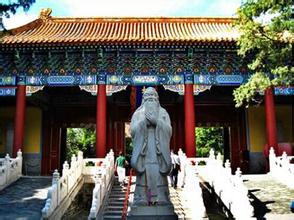
Located inside the south gate of Qufu, Shandong, the Temple of Confucius is a group of grand buildings built in oriental style. Together with the Summer Palace in Beijing and the Mountain Resort of Chengde, it is one of the three largest ancient architectural complexes in China.The Temple started as three houses in the year of 478 BC, the second year after the death of the sage. Each year as Confucianism became the standard of Chinese culture, its scale was expanded accordingly. Sacrifices were often offered, either by Emperors themselves, or by emperor-appointed high officials. In the Qing Dynasty (1644-1911), Emperor Qianlong offered sacrifices here eight times. The Gate to the Temple was named Lingxing Gate. Lingxing was the legendary star of literacy, and emperors offered sacrifices first to Lingxing when they offered sacrifices to heaven. The scale of offering sacrifices was as grand as that given to the heavens. This gives us an idea of the importance of the sage in history.
Penglai Pavilion---Yantai
The Penglai Pavilion is located on the top of Danya Mountain in the north of Penglai County, east of Shandong Province.
The buildings of the Penglai Pavilion are high up in the air, with cloud and mist around, making it look like an Asgard or a jade pavilion. Stepping on and looking around the mountains and islands, one can see unbounded sea with water and sky in the same color, illusively; the wonder of mirage appears often. This is the famous Penglai fairyland in ancient stories. The Penglai Pavilion was first built in the Jiayoureign of the Northern Song Dynasty and latter expanded in the Ming Dynasty. It has a double-eave gable and hip roof and is 15 meters tall with cloister around. On its top hangs a stele with the name of the pavilion written in golden letters by Tie Bao, a calligrapher of the Qing Dynasty (1644-1911). There are several constructions in the south of the pavilion, such as the Sanqing Hall, the Luzu Hall, the Tianhou Palace, the Longwang Palace, the Guanlan Platform, etc. These buildings feature a compact layout.
Daming Lake---Jinan
Located in the center of Jinan City, Daming Lake Park is regarded as one of the three must-see spots in Jinan (the others are Baotu Spring Park and Thousand-Buddha Mountain). The park is famous for Daming Lake (also known as the Lake of Great Light) which is a natural lake formed from many springs. Characteristically unique is its constant water level, unaffected by heavy rains or drought.Daming Lake Park covers a total area of 860,000 square meters (about 212 acres) of which the lake itself comprises of 460,000 square meters (about 113 acres). The six islands in Daming Lake contain flowers, trees and other plants flourishing amongst the various pavilions. The lake is a center of activity and one can find fish leaping near yachts and boats. In summer, lotuses bloom uninhibitedly filling half of the park with its fragrant scent. At the same time, willows circle the lake on three sides and swing with the breeze, a scene for which Daming Lake is famous. The centerpiece of the lake is a great man-made hectometer fountain built in 1985. The fountain has 103 injectors, and the main injector can spout water as high as 100 meters (about 328 feet) in all its majesty.
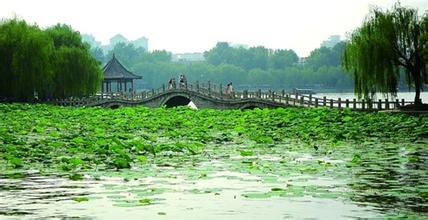
At the northwest bank of the lake stands Tie Xuan Temple (Tie Gong Temple). Built in 1792, it is a memorial to an official of the Ming Dynasty (1368-1644), Tie Xuan. He was a loyal military officer leading the army fighting for his emperor and local people, finally was killed cruelly after the failure. Admiring his heroic spirit and loyalty, the later generations built the temple. Tie Xuan Temple is a traditional courtyard in square shape. In the courtyard are Tie Xuan Temple, Small Canglang Pavilion, etc.The largest Taoist Temple in Jinan City, Beiji Temple (North Pole Temple), also called North Temple is located at the northeast bank of Daming Lake.
Huaguo Mountain---Lianyuangang
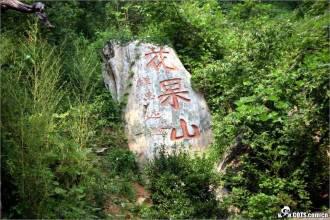
Huaguo Mountain is widely known as the hometown of the Monkey King in the classic The Journey to the West and is famous both home and abroad for the handsome Monkey King’s fairy tale.
It was originally called Cangwushan Mountain and is also named Qingfengding. It is the main peak of the ranges of Wutai Mountain. The Wunv Peak, which rises at a height of 625.25 meters above sea level, is the highest peak among all the mountains of Jiangsu Province.
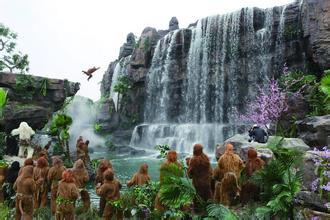
Huaguo Mountain is located in Lianyungang city which faces to Korean Peninsula and Japan to the east over the Huanghai Sea (Yellow Sea), neighboring Xuzhou City to the west, and Shandong Province to the north.
When spring arrives in March, “you will see red apricot blooming with flowers and green branches setting off against them, which lends more charm with serene beauty. When you go into the mountain, you will find sceneries everywhere and each with a myth or legend. Throuth the ages, an uncountable number of tourists go far into the “blessed land of cave” in small huddles with beautiful imaginations and experience the charming landscape with rich legendary color.
Zhoucun Ancient Commercial City---Zibo
Zhoucun Ancient Commercial City is located in the west of ZhoucunDistrict.In the year 2001,Zhoucun Ancient Commercial City was listed as the key development projects of tourism of Shandong Province. It is also acclaimed by the experts from China Ancient Architecture Preservation Commission as "the living ancient commercial architecture complex museum in China". It has high tourism value and historical and cultural significance. Now, Zhoucun Ancient Commercial City is a city protected historic site, province-level outstanding historical building complex and key development projects of tourism of Shandong Province.
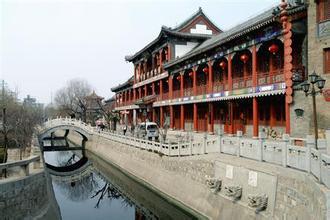
In Zhoucun Ancient Commercial City, people will see streets running across blocks, shops standing in great numbers and buildings of distinct architecture styles. Zhoucun Ancient Commercial City is composed of some ancient commercial streets and blocks like Da Jie (the Great Street), Si Shi Jie (Silk Market Street), YinZi Shi Jie (Silver Market Street) and so on.
Liugong Island---Weihai
Liugong Island is located about 4 kilometers from the city of Weihai. It has an area of 3.15 square kilometers, with a maximum length of 4.08 kilometers (in east-western direction) and a maximum width of 1.5 kilometers. The coastline has a total length of 14.93 kilometers. In general, the terrain of the island slopes down from the north to the south. With an altitude of 153 meters, QidingMountain, is the highest point of the island. Its northern slope is made up of cliffs, whereas the southern side of the hill slopes down more gently.
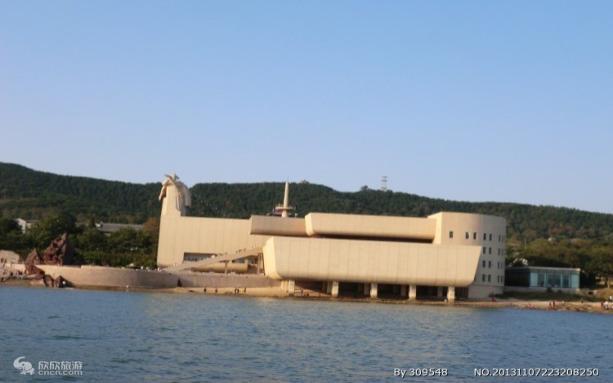
It was the birthplace of the earliest naval in recent China - Beiyang Navy. And it is also the ancient battlefield of Jiawu (the war happened during Jiawu Period) Sino-Japanese War of 1894-1895, thus Liugong Island is names as "the unsinkable battle ship".Jiawu Sea Warfare Museum is a large scale commemorative museum to display the tragically heroic history of Jiawu Sea Warfare by applying comprehensive arts including architecting, sculpturing, painting and movies. It is made up of 9 parts which could represent the whole process from the buildup of Beiyang Navy to the complete annihilation. The nine parts are: Sequence hall, Buildup of Beiyang Navy, School of Beiyang Navy in the Summer Palace, Bandao Sea Warfare, Pingrang Warfare, Huanghai Sea Warfare, the Lose of Lvshun Base, Battle in Weihai and the End Hall.By applying mordent electronic, light and Sound techniques to create the situation, tourists can "experience" the warfare by ears and eyes. The whole museum is grand and magnificent with a shape as many ships which are striking each other. And there is also a 15- miles-high statue of a navy general on top of the building.